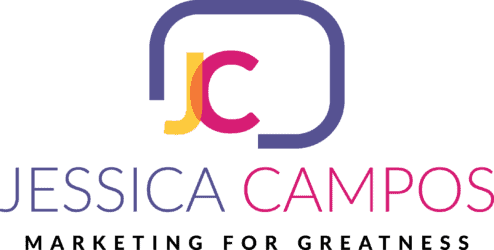
- June 26, 2022
- 11:10 am
How Can Local Businesses Survive Inflation? | MFG

After relying primarily on price increases, business owners and executives are looking for creative ways to maintain profit margins and survive during inflation.
Here are a few fast facts based on the latest Consumer Price Index as of March 2022:
- Food prices rose 8.8%, and the largest increase was in the “food at home” category (i.e., groceries).
- Energy prices rose 32%, and the largest increases were in the “fuel oil and gasoline” categories.
- Prices for items outside of food and energy rose 6.5% and the largest increase was in the “shelter” category.
So, how do you fight inflation, without increasing your prices?
According to a recent MFG survey of local business owners in Austin, Texas, the majority of business owners are fighting inflation by increasing their marketing efforts to increase their overall sales volume, followed by pricing strategies, and outsourcing.
Those are all great ideas, but there are a million strategies out there to improve your bottom line even as everything gets pricier.
Here are a few ways that businesses can adjust to inflation:
1) Increase marketing efforts to generate more sales volume. If your product is selling at the same price but you’re able to sell more units, your business will still come out ahead. Develop a strategic plan to nurture existing consumers and reach new audiences at the same time.
2) Know your numbers. Keep a close eye on your budget and know where every penny is going. The same goes for your revenue. Get granular data about your top-selling products. Knowing where you can make cuts will help save your business money.
3) Be creative with pricing. If you must increase prices, look for ways to do it in a way that won’t cause too much of a shock to your customers. For example, you could institute a small price increase for all customers or offer discounts for bulk purchases or preorders.
4) Consider outsourcing. In some cases, it may be more cost-effective to outsource certain aspects of your business rather than try to do everything in-house.
5) Keep your employees and customers happy. Inflation can be tough on everyone, but it’s important to try to maintain a positive attitude and keep your employees and customers happy. After all, they are the backbone of your business. Loyalty programs are a great way to keep customers coming back, and happy employees are more productive employees. A loyalty program is a system where customers can earn rewards for their purchases. For example, a business might offer a loyalty card that gives customers 1 point for every $1 they spend. Once the customer reaches a certain number of points, they can redeem them for discounts or freebies.
6) Implement better processes and systems. Review your current processes and see where you can make improvements that will help increase efficiency and decrease costs, especially in the following areas of your business:
- Productivity
- Customer service
- Business development
- Digitalization
- Automation
7) Reduce advertising costs by utilizing digital marketing methods which are often more cost-effective. This means:
- Focusing on SEO to make sure your website appears as the top result in search engine results pages.
- Utilizing social media platforms, such as Facebook and Instagram, to reach potential customers.
- Creating email marketing campaigns to promote your products or services.
- Using content marketing to attract potential customers to your website.
By utilizing these digital marketing methods, you can reduce your advertising costs and still reach a large audience.
How does inflation affect your marketing strategy?
If you’re not sure how to adjust your marketing strategy for inflation, here are a few tips:
1) Review your target audience. Make sure you understand who your target audience is and what their needs are. This will help you determine how to best reach them with your marketing message.
2) Focus on value. When consumers are feeling the pinch of inflation, they’re going to be more focused on getting the most bang for their buck. Make sure your marketing messages emphasize the value of your product or service.
3) Get creative with your messaging. If you can find a way to stand out from the competition and grab attention, you’ll be in a better position to succeed during periods of inflation.
4) Be flexible. Inflation can be unpredictable, so it’s important to be flexible with your marketing strategy. If you’re able to adapt quickly to changes in the market, you’ll be in a better position to succeed. If you are working with a marketing agency or lead a marketing team, be sure that you can implement new initiatives and pivot quickly.
5) Market to existing customers. During periods of inflation, it can be more difficult to attract new customers. Instead, focus on marketing to your existing customer base and try to increase loyalty and repeat business.
How can businesses benefit from inflation?
Your business can benefit from inflation, in the long run. By staying proactive, your path to leading your market would be much easier. Also, as time goes by and people get used to the idea of inflation, they will start to think about it less and carry on with their lives. In turn, this would lead to more customers for your business and help you maintain a good market share.
How can a fractional CMO help your business thrive during inflation?
A fractional Chief Marketing Officer (CMO) is a senior-level marketing executive who can be hired on a part-time or project basis to provide expert marketing guidance and leadership to businesses.
Why hire a fractional CMO?
There are several reasons why you might consider hiring a fractional CMO:
1 ) You’re not ready to commit to a full-time CMO. A full-time CMO salary is typically out of reach for many small businesses. But by hiring a fractional CMO, you can get the same level of expertise and experience without breaking the bank.
2) You need help with a specific marketing project. If you have a specific marketing project that needs to be completed, such as rebranding or launching a new product, a fractional CMO can help you get it done.
3) You need an experienced marketing leader. If you’re a small business without a lot of marketing experience on your team, hiring a fractional CMO can give you the expertise and leadership you need to take your marketing to the next level.
4) You need help with marketing strategy. One of the most important roles of a CMO is to develop and execute a marketing strategy that aligns with the business’s overall goals. If you need help developing or fine-tuning your marketing strategy, a fractional CMO can be a great resource.
5) You want to reduce your marketing costs by outsourcing but don’t have the capacity to lead a marketing team. By hiring a fractional CMO, you can outsource your marketing functions and still have someone in-house to provide leadership and strategic direction.
If you’re facing inflation and aren’t sure how to adjust your marketing strategy, a fractional CMO can help. A fractional CMO can provide the expert guidance you need to navigate the challenges of inflation and keep your business thriving.
MFG offers fractional CMO services in Austin, Texas
Learn more about our digital marketing services and how we can help you drive more business by visiting our website or contacting us today.


